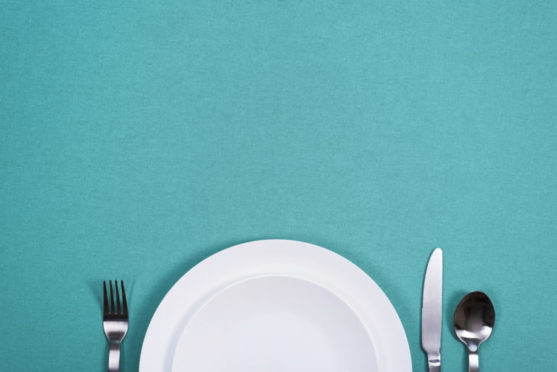
The number of children and young people living with a deadly eating disorder has soared during lockdown, the Royal College of Psychiatrists in Scotland has revealed.
Statistics from a Freedom of Information request show there was 217 referrals for eating disorders in children and young people under the age of 18 in 2018/19 increasing sharply to 456 in 2019/20.
In 2020/21, that figure more than tripled to 615 referrals.
In Grampian, the statistics increased the most – with 28 referrals in 2018/2019 up to 70 in 2020/21.
And in the Lothians, there were 44 referrals in 2018/19 increasing to 60 in 2020/21.
The Scottish Borders also had 57 children and young people referred for eating disorders in 2018/19 increasing to 67 in 2019/20.
Rob Donaldson’s 16-year-old daughter is currently being treated for at a young person’s unit after being diagnosed with the illness in 2019.
She was first admitted to hospital in April 2020, shortly after lockdown began. She had struggled to cope when her weekly face-to-face treatment was moved online due to the pandemic.
Donaldson, who is from Dundee, said: “It’s a worrying to see the statistics for children and young people with eating disorders increase across Scotland. Lockdown has had a huge negative impact on my daughter’s anorexia.
“They were the worst days of my life:” living with a sibling’s eating disorder
“We were receiving outpatient care at home and attending weekly family-based therapy sessions but all of a sudden that stopped. Therapy took place on video calls, and it simply did not work for her.
“There was nothing to motivate her to eat, without school and being isolated at home all day, the illness thrived. Within a few weeks of lockdown, she quickly deteriorated and was admitted to an inpatient unit for young people.
“This was a huge shock for us all and during the early days of the pandemic as we were not allowed to see her for three weeks.
“After four months she was well enough to come home, this was late summer 2020 but by mid-November she was very ill again and was once more admitted to a specialist young person’s unit. Unfortunately, the only bed available was in Glasgow which was over 100 miles from home. This was traumatic for us all.
“Shortly after this the country was in lockdown again there was no school, no concerts, no cinemas and without anything to fight for it has been really hard for her to make any steps towards recovery. We didn’t celebrate Christmas and her 17th birthday has come and gone.
“While she remains in hospital battling anorexia on a daily basis, I have some hope that as we ease out of lockdown there will be more reasons to fight and make some steps towards recovery, like getting back to school, learning to drive and going out with family and friends.”
Now RCPsych in Scotland is calling on the new Minister for Mental Wellbeing to ensure that the new funding announced for CAMHS in February 2021, also covers young people with eating disorders.
The College is also seeking a firm guarantee that details on the new national transition strategy for all young people with mental illness, is released without delay – as moving from CAMHS into adult services is a particularly dangerous time for young people with eating disorders.
Eating Disorder Awareness Week: The voice inside my head that tried to kill me
As Covid-19 restrictions ease, the College wants to see a return to face to face consultations as soon as it is safe to do so, as they say these types of appointments often work best for patients with eating disorders.
Dr Ereni Skouta, vice-chair of the CAMHS faculty at the Royal College of Psychiatrists in Scotland, said: “While it’s disappointing that not all health boards responded with figures, what is clear from the data is, that action is needed now.
“The truth is, CAMHS services were already struggling to cope pre-pandemic but now we’re seeing a worrying trend and a huge increase in the number of children and young people presenting with deadly eating disorders.
“An emphasis on virtual appointments, loss of support structures and staffing shortages as well as less access to community services because of Covid-19, has fuelled this crisis.
“We welcomed the Scottish Government’s National Review of Eating Disorder services in March 2021, but work is still ongoing.
“During the last year, the College heard from members that CAMHS services are at breaking point. We’re now calling on the new Minister for Mental Wellbeing to ensure the new funding promised last year, also includes those young people with eating disorders.”

Enjoy the convenience of having The Sunday Post delivered as a digital ePaper straight to your smartphone, tablet or computer.
Subscribe for only £5.49 a month and enjoy all the benefits of the printed paper as a digital replica.
Subscribe